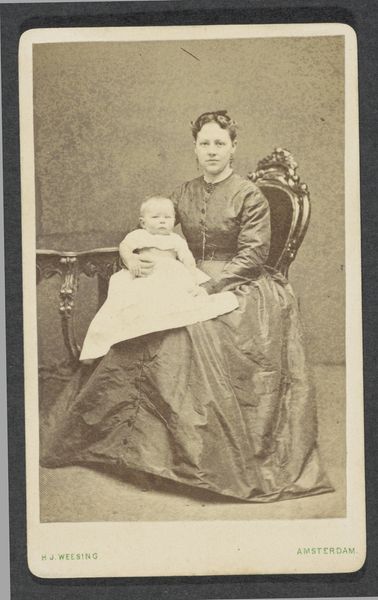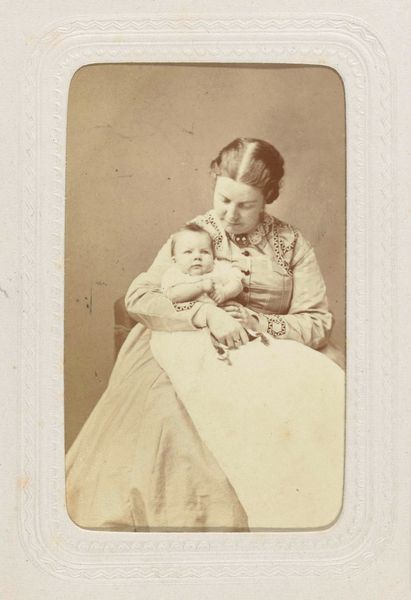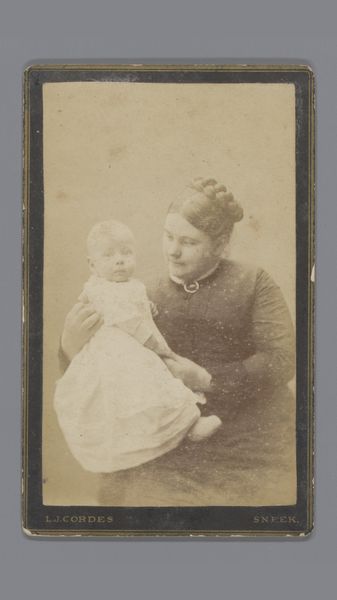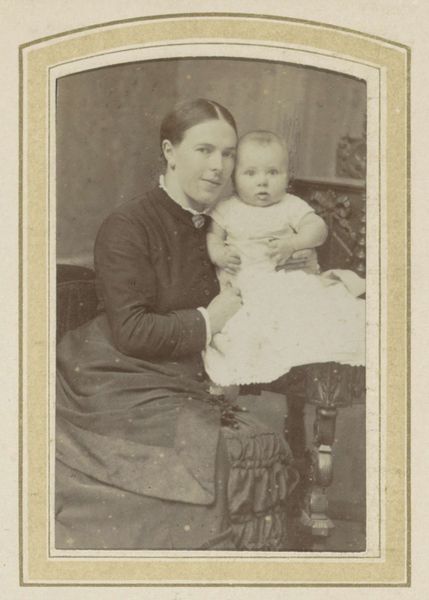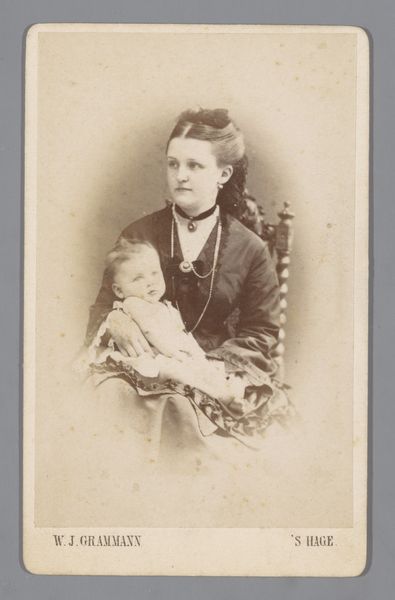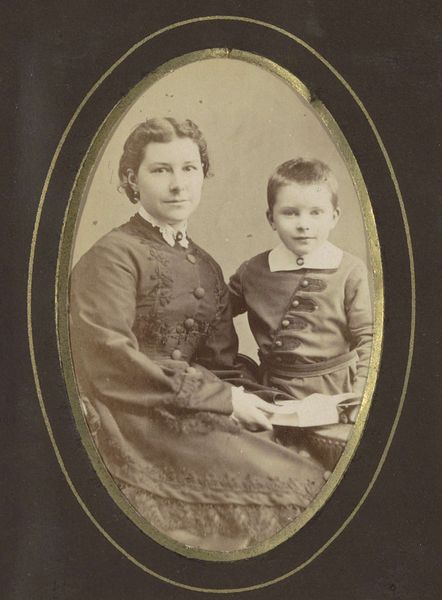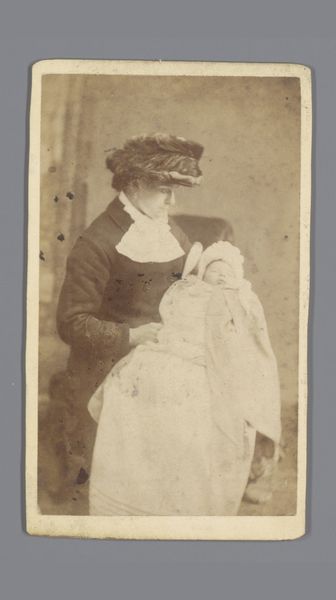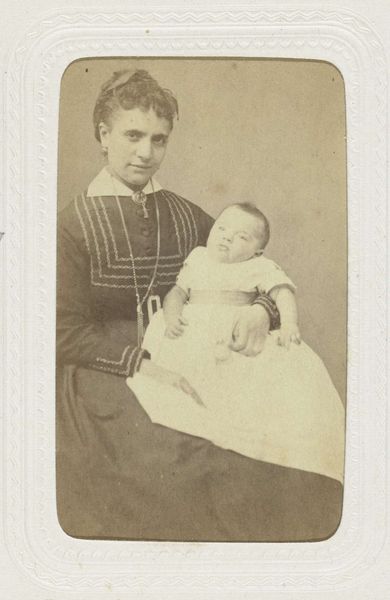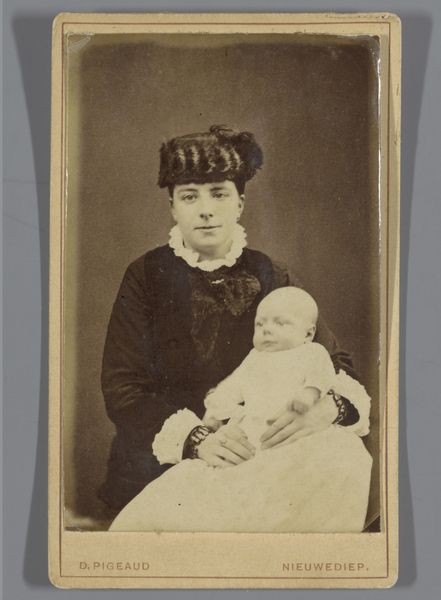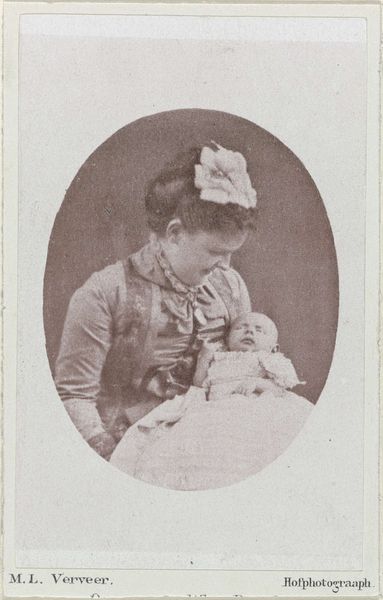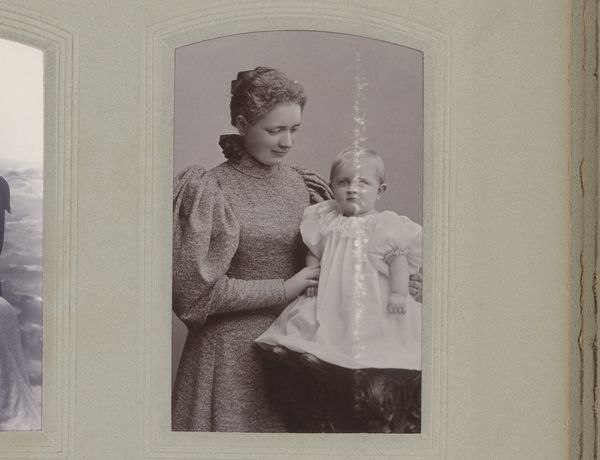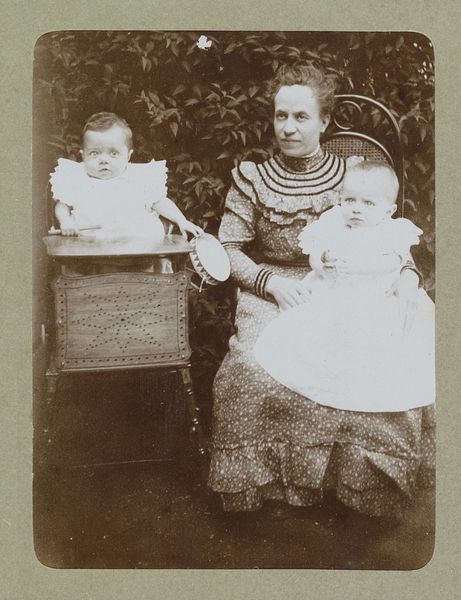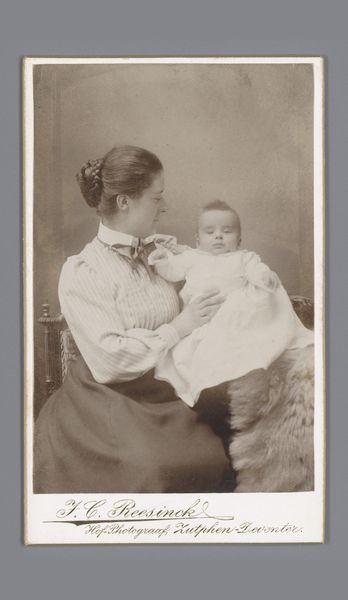
Portret van een vrouw met een baby in een kinderwagen c. 1864 - 1890
0:00
0:00
mauritsverveer
Rijksmuseum
photography, albumen-print
#
portrait
#
still-life-photography
#
photography
#
historical photography
#
19th century
#
genre-painting
#
albumen-print
Dimensions: height 96 mm, width 63 mm
Copyright: Rijks Museum: Open Domain
Curator: Welcome. Before us is a fascinating albumen print dating from around 1864 to 1890, "Portret van een vrouw met een baby in een kinderwagen," attributed to Maurits Verveer, held in the Rijksmuseum. Editor: It's remarkably staged, isn't it? The somber sepia tones create a sense of studied formality, of an important occasion. The composition seems carefully calibrated. Curator: Indeed. Note the balance: the woman, elegantly posed beside a neoclassical-style pedestal, and the baby in the intricately woven pram below. It's a study in contrasts – the adult's composure against the child's almost sculptural repose. Observe the lines of her dress, echoed in the drapery behind. Editor: Yes, but let's consider that woven pram for a moment. The care in its construction, likely by skilled artisans. Albumen prints capture an interesting paradox – emerging industrialized photographic techniques immortalizing traditional craft practices in objects like that carriage. I wonder about its availability. Who was able to afford this kind of craftsmanship? Curator: The wicker certainly adds a textural element that contrasts beautifully with the smooth surface of the albumen print, the crisp detail rendering its intricate weave quite remarkable. Its circular form offsets the angular lines of the plinth rather wonderfully, I think. Editor: But beyond just "texture," the choice of wicker points to specific artisanal traditions and markets for such goods. This object gives so much information. Was that pram woven by a mother or father as they awaited their child, and what does this suggest about labor at the time? What kind of value do we place on these crafts in the same frame as new industrial achievements? Curator: Those layers of visual information build toward the central subject. If one looks closely at the woman’s face, at the almost imperceptible lines etched there. It evokes so much: familial duty, a hint of world-weariness maybe? The symmetry and balance direct the gaze straight toward her expression. Editor: The materiality of the photograph, with its limited tonal range, almost flattens emotion while presenting evidence. To consider how material and social circumstances converge here to fix the woman and child within constraints of class, posing both subjects for inspection, gives a sense of both immediacy and historical distance. Curator: A fascinating encapsulation of its era through compositional skill. Thank you for drawing out those intricate readings, Editor. Editor: An object, truly representative of the era's evolving landscape of both artistic media and artisanal industries. Thank you.
Comments
No comments
Be the first to comment and join the conversation on the ultimate creative platform.
